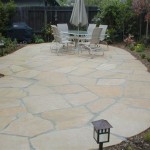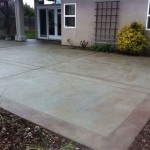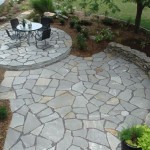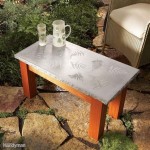How To Fix Patio Pavers Pulled Up By A Pool Cover Roller
Pool cover rollers are essential for maintaining clean and safe swimming pools, especially during off-seasons. However, the repeated back-and-forth movement and the weight distribution of these rollers can exert considerable stress on surrounding patio pavers. Over time, this can lead to the pavers becoming dislodged, uneven, or even completely pulled up. Addressing this issue promptly is vital, not only for aesthetic reasons but also to prevent safety hazards and more extensive damage to the patio surface. This article provides a detailed guide on how to fix patio pavers that have been affected by a pool cover roller, ensuring a durable and visually appealing solution.
Understanding the Problem: Identifying Causes and Contributing Factors
Before embarking on the repair process, it is crucial to understand the underlying reasons why the pavers are being affected by the pool cover roller. Several factors can contribute to this issue, and accurately identifying them will help prevent future occurrences.
One significant cause is inadequate base preparation. The base beneath the pavers, typically consisting of compacted gravel and a leveling layer of sand, provides the necessary support and drainage. If the base is not properly compacted or is uneven, it can shift and settle over time, creating instability beneath the pavers. The constant rolling action of the pool cover mechanism then exacerbates this instability, causing the pavers to loosen and lift.
Another contributing factor is the type of paver and its installation method. Pavers that are too thin or lack interlocking features are more susceptible to displacement. Similarly, if the pavers are not installed with tight joints and adequate edge restraints, they are more likely to shift under pressure. The absence of a proper polymeric sand joint filler can also contribute, as it allows water to penetrate the joints, weakening the base and promoting erosion.
The design and operational characteristics of the pool cover roller itself can also play a role. Rollers with narrow wheels or uneven weight distribution can concentrate pressure on specific areas of the patio, accelerating paver displacement. Furthermore, improper operation or excessive force applied to the roller can also contribute to the problem.
Finally, environmental factors such as freeze-thaw cycles can significantly impact the integrity of the paver installation. Water that seeps into the base and joints can freeze and expand, exerting pressure on the pavers and causing them to heave or crack. This effect is particularly pronounced in regions with cold climates.
Repairing Dislodged Pavers: A Step-by-Step Guide
Once the underlying causes have been identified, the repair process can commence. This involves several key steps, each requiring careful attention to detail to ensure a lasting and effective solution.
Step 1: Remove the Affected Pavers
The first step is to carefully remove the dislodged pavers. This can be done using a flathead screwdriver and a hammer. Gently insert the screwdriver into the joints surrounding the affected paver and tap it with the hammer to loosen the paver. Repeat this process on all sides until the paver can be lifted out. Take care not to damage the surrounding pavers during this process. If the pavers are difficult to remove, a paver lifting tool can be used.
Step 2: Inspect the Base and Sub-Base
After removing the pavers, thoroughly inspect the condition of the base and sub-base. Look for signs of erosion, settling, or unevenness. Use a level to check the flatness of the base. If the base is significantly uneven or eroded, it will need to be repaired or replaced. Remove any loose debris, weeds, or other obstructions from the area.
Step 3: Repair or Replace the Base Material
If the base material is damaged, it will need to be repaired or replaced. For minor settling or unevenness, add or remove sand to create a level surface. Use a tamper to compact the sand and ensure it is firm and stable. For more significant damage, it may be necessary to remove the existing base material and replace it with fresh gravel and sand. Ensure that the gravel is properly compacted and the sand is leveled to the correct height. The base should slope slightly away from the pool to promote drainage.
Step 4: Reinstall the Pavers
Once the base is properly prepared, the pavers can be reinstalled. Carefully place each paver back into its original position, ensuring that it is level and flush with the surrounding pavers. Use a rubber mallet to gently tap the paver into place. If necessary, add or remove sand beneath the paver to achieve the correct height and alignment.
Step 5: Fill the Joints with Polymeric Sand
After the pavers have been reinstalled, fill the joints with polymeric sand. This type of sand is designed to harden when activated with water, creating a durable and weed-resistant joint filler. Sweep the sand into the joints using a broom, ensuring that they are completely filled. Then, use a plate compactor (with a rubber mat attachment to prevent scratching) over the pavers to further settle the sand into the joints.
Step 6: Activate the Polymeric Sand
Once the joints are filled, activate the polymeric sand by lightly spraying the area with water. Follow the manufacturer's instructions for the proper amount of water to use. Avoid over-watering, as this can wash the sand out of the joints. Allow the polymeric sand to cure completely, typically 24-48 hours, before allowing foot traffic on the area.
Preventive Measures: Protecting Pavers from Future Damage
While repairing dislodged pavers is essential, implementing preventive measures is equally important to minimize future damage and prolong the lifespan of the patio.
One effective strategy is to improve the base preparation during the initial installation. Ensure that the base is properly compacted and leveled, using high-quality materials that provide adequate drainage. Consider using a geotextile fabric beneath the base to prevent soil erosion and maintain the integrity of the base over time. The base depth should be appropriate for the soil conditions and climate, with deeper bases recommended for areas with heavy rainfall or freeze-thaw cycles. A well-prepared base significantly reduces the likelihood of paver displacement from pool cover roller activity.
Another preventative measure is to select and install pavers with interlocking features. Interlocking pavers are designed to fit together tightly, creating a more stable and cohesive surface. These pavers are less likely to shift or separate under pressure, providing enhanced resistance to the forces exerted by the pool cover roller. Using thicker pavers further contributes to their durability and stability.
Protecting the patio surface with a sealant can also help to prevent water penetration and reduce the risk of damage from freeze-thaw cycles. Apply a high-quality paver sealant according to the manufacturer's instructions, typically every 1-3 years, to maintain its effectiveness. The sealant will create a barrier that repels water and prevents it from seeping into the base and joints.
Regular maintenance is crucial for preserving the integrity of the paver installation. Sweep the patio regularly to remove debris and prevent the build-up of organic matter, which can promote weed growth and erosion. Inspect the pavers periodically for signs of damage, such as cracks or chips, and repair them promptly to prevent further deterioration. Reapply polymeric sand to the joints as needed to maintain their integrity and prevent water penetration.
Consider using a wider wheel pool cover roller or placing a protective mat under the pool cover roller's wheels. This will distribute the weight more evenly and reduce pressure on individual pavers. Ensure the wheels are in good condition and rotate freely. Regular maintenance of the pool cover roller will also prolong paver integrity.
Finally, ensuring proper drainage around the patio area is critical. Install gutters and downspouts to direct water away from the patio and prevent it from pooling around the pavers. Grade the surrounding landscape to promote drainage away from the patio surface. Proper drainage will minimize water penetration and reduce the risk of damage from freeze-thaw cycles and erosion.

All You Need To Know About Installing A Pool Cover Roller

All You Need To Know About Installing A Pool Cover Roller

Ultimate Guide To Fixing Concrete Pool Deck Settlement

All You Need To Know About Installing A Pool Cover Roller

All You Need To Know About Installing A Pool Cover Roller

All You Need To Know About Installing A Pool Cover Roller

How To Install A Pool Fence In Pavers All Safe Covers

All You Need To Know About Installing A Pool Cover Roller

How To Install A Pool Fence In Pavers All Safe Covers

How To Repair Sinking Pool Deck Pavers You Won T Believe What Happens Next
Related Posts








